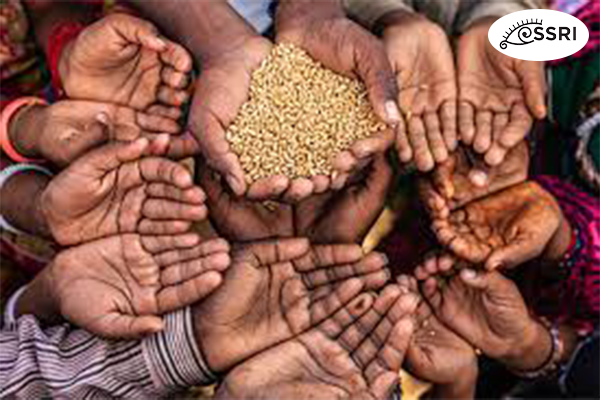This article delves into poverty, a critical issue impacting both America and the global community. It explores the underlying causes of poverty and proposes potential solutions.
Introduction
Society frequently perceives poverty as an individual problem, attributing it to personal decisions and responsibility for income and financial stability. However, poverty is a multifaceted issue shaped by economic structure deficiencies, unequal resource distribution, and various other factors, rendering it a substantial social dilemma. The absence of robust financial stability systems contributes to numerous consequences such as increased crime rates, substandard educational achievements, insufficient healthcare, and more. Addressing and remedying these challenges falls squarely within the government’s purview.
Exploring the Root Causes of Poverty: A Literature Review
Numerous studies and publications extensively analyze the root causes of poverty. According to E. Royce (2019), in his book, the current economic system in the United States impedes many citizens from attaining adequate income and financial stability. Royce argues that the distribution of goods under the existing structure predominantly benefits a minority of wealthy individuals, while a significant portion of the population struggles to secure stable employment with livable wages.
The inequality resulting from the government’s failure to establish a fair economic system gives rise to a spectrum of social issues. Royce critiques the notion of the poverty line, which has remained largely unchanged since the 1960s despite substantial shifts in consumption patterns. The poverty line, calculated based on the cost of basic necessities, fails to account for modern essentials like computers and mobile phones (Royce, 2019).
Consequently, individuals with low incomes face social isolation as they lack access to essential modern tools, including participation in social networks. They may be marginalized within their communities for not conforming to the societal ideal of active and engaged citizens striving for success. This exclusion, compounded by societal pressures, further segregates impoverished individuals from mainstream social life. Moreover, inadequate access to healthcare and education exacerbates their challenges.
Literature also explores how poverty influences individual behavior. For instance, research indicates that children raised in low-income households experience heightened stress from lacking desired possessions (McFarland, 2017). Growing up in densely populated, economically disadvantaged neighborhoods can increase the likelihood of engaging in delinquent behaviors, contributing to the formation of high-crime areas.
Reflecting on Poverty as a Social Issue
It is easy to predict the social issues that poor people face daily. They often cannot access proper healthcare services due to high costs. Additionally, many commercial organizations that offer low-paid, customer service-based jobs may prevent employees from taking sick leave. As a result, people suffer from various illnesses without visiting a hospital, fearing they will lose their job.
Another issue is the inability of poor people to send their children to high-performing schools, which are usually expensive. This lack of access to quality education perpetuates the cycle of poverty, as these children are less likely to secure decent jobs in the future.
Moreover, children who cannot acquire goods valued by their peers are more likely to adopt criminal behavior in their pursuit of success, as community norms and morals may not support their goals.
Reflecting on Poverty as a Social Issue
Poverty is a pervasive issue that affects millions of people worldwide. It is not merely a result of individual failings or poor decisions but a complex problem rooted in systemic and structural inequalities. Reflecting on poverty as a social issue requires us to look beyond the surface and understand the deeper factors that contribute to its persistence.
Daily Struggles of the Poor
The daily struggles faced by those living in poverty are numerous and often debilitating. Access to proper healthcare presents a significant challenge, as medical services are typically costly. Many low-wage jobs, particularly in the customer service sector, do not provide paid sick leave, discouraging employees from taking time off when they fall ill. This perpetuates a cycle where individuals suffer from untreated illnesses, exacerbating their health problems and further hindering their ability to escape poverty.
Education represents another critical area where the economically disadvantaged face significant disadvantages. High-performing schools, which yield better educational outcomes, are generally expensive and beyond the financial means of low-income families. This lack of access to quality education perpetuates the cycle of poverty, as children from these backgrounds are less likely to secure well-paying jobs in the future. Without a strong educational foundation, their opportunities for upward mobility are severely constrained.
Social Isolation and Marginalization
Poverty also fosters social isolation and marginalization. In a society where material possessions often signify success and social standing, individuals unable to afford modern essentials like computers and mobile phones are excluded. This exclusion extends to social networks and community engagements, deepening their sense of alienation. Such social marginalization is compounded by the prevailing societal notion that success is solely a matter of individual effort, pushing impoverished individuals further to the fringes of society.
Children from low-income households confront additional hurdles. Deprived of the items valued by their peers, they experience feelings of exclusion and disconnection. This sense of not belonging can prompt them to engage in negative behaviors as they seek alternative routes to acceptance and achievement. In some instances, this quest for validation may lead to involvement in criminal activities, perpetuating a cycle of poverty and social exclusion.
Systemic Solutions
Addressing poverty as a social issue requires systemic solutions that transcend individual efforts. One of the most effective strategies is to overhaul the existing economic structure to provide better financial and social support for disadvantaged groups. This transformation entails reconfiguring the social sector to cater to the needs of all citizens.
Increasing funding for education is pivotal. Ensuring universal access to quality education equips children with the skills and knowledge needed to secure better jobs and elevate their economic standing. Moreover, implementing after-school programs can engage youth in constructive activities, thereby reducing the likelihood of them turning to delinquent behaviors.
Affordable healthcare represents another critical component. Establishing accessible healthcare for all, irrespective of income level, helps break the cycle of untreated illnesses and job insecurity. This can be accomplished through policies that guarantee universal healthcare coverage and safeguard workers’ rights to take sick leave without jeopardy to their employment.
Reallocating budgetary expenditures to prioritize social support programs is equally essential. Governments must allocate adequate resources to these initiatives, potentially necessitating reductions in other areas of expenditure. Addressing youth delinquency through enhanced social support can diminish the need for extensive police services, yielding long-term savings.
Addressing Poverty: Effective Solutions
In summary, it is evident that changing the existing economic structure at the governmental level is the most effective solution to poverty. A comprehensive strategy addressing all aspects of this issue is necessary, with the goal of increasing financial support for disadvantaged groups and expanding opportunities for income growth.
Firstly, reforming the social sector is crucial. The government should augment funding for schools to ensure universal access to quality education. Implementing diverse after-school programs can also engage youth constructively. Additionally, making healthcare affordable for everyone is essential to alleviate pressure on workers needing sick leave.
Secondly, restructuring budget spending is imperative. Social support programs necessitate substantial funding sourced from taxes. One viable approach involves reallocating resources by reducing government expenditures in other sectors. Moreover, enhancing social support to address youth delinquency can potentially reduce the demand for extensive police services, thereby lowering law enforcement costs.
Concluding Thoughts on Poverty as a Social Issue
Poverty is fundamentally a structural issue rooted in inadequate economic systems within countries. It spawns a host of social challenges, such as inadequate healthcare, substandard education, and heightened crime rates. Addressing poverty requires a nuanced approach as it is a complex and enduring problem that cannot be swiftly resolved. However, one promising strategy involves enhancing both financial and social support for the population, thereby creating opportunities for individuals to enhance their income levels and overall quality of life.
References
Works Cited
- McFarland, M. (2017). Poverty and problem behaviors across the early life course: The role of sensitive period exposure. Population Research & Policy Review, 36(5), 739-760.
- Royce, E. (2019). Poverty and power: The problem of structural inequality (3rd ed.). Lanham, MD: Rowman & Littlefield.




